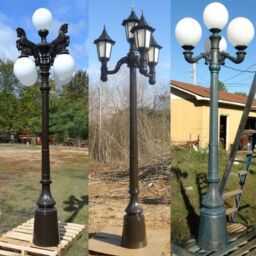Home Automation is a gift of the modern day technology. Here are some techniques that help in building the connectivity for home electronic systems.
Although these are slow, yet the international standards largely participation in trading the ideas among the developers for home automation across the globe. Its application models & specifications promote the inter-operability of all the electronic products at home. It is all worth being considered in order to focus the latest protocols.
Reports have been written in order to lead the energy utility corporations towards developing new consumer services that would utilize the networks for the home automation. This further led to the development & growth in home automation networkings’ international standards known as the HES (Home Electronic System). Recently, this material was updated and it reflects the progressive results of the work.
The primary gal of HES is to identify the software & hardware to enable the manufacturers to offer the one product version that would operate for a quite a large range of the networks of home automation.
Several HES components are essential to accomplish the objective. These are as follows:
1. Universal Interface
Usually known as the UI, the module of this interface is integrated among the appliances in order to allow their communication over the different home automation networks. It meets with the primary goals of HES, that is, establishing communication amidst the appliances in any communication home automation network. It is incorporated in the appliances with a standard data plug. Then standard language application is developed likewise for all messages & commands for the appliances.
It’s each connection points towards the network with the NAU that means Network Access Unit. This converts the appliances’ messages & data signals in to some specific communication protocol of the home automation. HES identifies the protocol of these communications between NAU & UI.
2. Command Language
It refers to the language that the appliances use in order to communicate among each other irrespective of their network where the messages are carried forward. HES language accommodates these commands in the networks. However, interposing the links among NAU-IU the appliances & network mediums does not optimize the operating system of home automation systems; it only reduces the costs when these are sold in the large market.
3. HomeGate
This is a residential gateway link that controls the network at home & the external networks offered by the service providers. Its primary function is the translation of the protocols amidst the Wide Area Network or the WAN and the Local Area Network or the LAN. Its features consist of the firewall limiting messages that can flow inside & outside the house.
Other features of the HES are as follows:
1. HES’ working groups are licensed to investigate the network applications on control, communications, & command in the mixed use & commercial buildings. The apartment houses with offices as well as the retail shops come under the category of mixed-use buildings.
2. The designers of the sub-systems & the appliances are the deciding people for the variables & functions that would be accessed from the other gadgets with in the network of the home automation. The engineering language explains that these are options that define controllability & observability. The idea is that there must be some consistency level in such decisions so that the devices can interoperate successfully. This application model explains that the device’s engineering aspects that can be written, read or executed through the networks. It is an important model that is used to convey the information to the item’s manufacturers who would be connected with the network for the home automation purposes.
3. The major protocols never include the sub-systems models’ complete application with in its specifications. Only checking the objects that comprise the application can infer the model. This selection of variable, methods and the objects is patterned on the basis of how the given communication interface designer understands the device. The information must be completely described in this application model. Else, the manufacturers might misinterpret the details on operating the device as they do not have the staff or the network experts with familiarity of the communication models.
4. The countries that are considered as the Principal Members have now approved the HES models for the publications including security, energy management, and control system. The HES Working Group examines the functional safety issues. Therefore, the International Electrotechnical Commission or the IEC’s Advisory Committee for Safety has requested this Working Group to develop some guidelines for home automation network’s safety. These safety messages are considered critical and must be confirmed prior to being sent through out the network. These appliances operate through a network and do not compromise in its safety aspects. So, in case the network fails, the device maintains its appropriate level of safety.
5. Safety standards have been defined by the IEC for its various devices when ever they have to operate individually. The key concern of the ACOS is the interaction among products via the home control networks must match up with the safety requirements’ harmonization. Their functional safety is also defined by IEC in terms of the home control system’s capacity to execute the actions that are essential for the maintenance & achievement of the desired safety levels in the normal situations as well as the emergency cases.
AUTOPOST by BEDEWY VISIT GAHZLY



